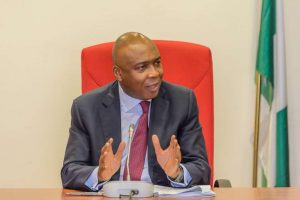Japan recognizes dozens more ‘black rain’ victims as Hiroshima survivors

In its verdict, the Hiroshima district court said the 84 plaintiffs, who suffered radiation-related illnesses after the World War II bombing, should receive the same benefits as other victims who lived closer to the blast range.The United States dropped the bomb on Hiroshima, a city in southwest Japan, on August 6, 1945, killing more than 70,000 people instantly. A second bomb followed three days later over Nagasaki and killed 40,000 more. The bombings left tens of thousands of others to die slowly from burns or radiation-related illnesses. They also caused radioactive “black rain” to fall across the region — a mixture of fallout particles from the explosion, carbon residue from citywide fires, and other dangerous elements. The black rain fell on peoples’ skin and clothing, was breathed in, contaminated food and water, and caused widespread radiation poisoning. The US remains the only country to use an atomic bomb in war.Seiji Takato, 79, one of of the plaintiffs in the lawsuit, was 4 years old when the bombing happened. He developed arm lymph inflammation when he was 8, and has since suffered from stroke and heart problems.But until now, he and others living in the “light rain” exposure zones were unable to access the free medical care offered to victims in the “heavy rain” zones — the areas identified by the government as being worst-affected and closest to the blast zone. This verdict marks the first time victims outside this zone have been granted the same benefits. “We have been telling the government the facts and the truth as they were. But they had never listened to us,” Takato said after the court released its decision. “I am extremely happy. I did not expect all 84 (plaintiffs) would win the case.”Takato added that he had been “anxious” because all the plaintiffs were now elderly, mostly in their 80s and 90s. “We would all die if this (case were) prolonged,” he said.The verdict ordered the city and prefectural government to provide the plaintiffs a certificate that recognizes them as “A-bomb victims,” which grants them medical benefits for the time they received treatment, worth about $300 a month.At a news conference, Chief Cabinet Secretary Yoshihide Suga said the government had not decided whether to appeal the ruling. “We will have the verdict examined in detail by the ministries, Hiroshima prefecture and Hiroshima city to decide for further action to take,” he said.75 years laterThe landmark ruling comes a week before the 75th anniversary of the attack, when former US President Harry S. Truman authorized US B-29 bomber aircraft Enola Gay to drop a nuclear bomb codenamed “Little Boy” on Hiroshima. Those who survived say the detonation began with a noiseless flash, and a massive wave of intense heat that turned clothing to rags. People closest to the site of impact were immediately vaporized or burned to ashes. There was a deafening boom and a blast that — for some — felt like being stabbed by hundreds of needles.Then the fires started. Tornadoes of flames swept through the city. Many survivors found themselves covered with blisters. Bodies littered the streets.The utter devastation has led many, including former US President Dwight D. Eisenhower, to criticize the decision to use an atomic bomb.In 1958, the Hiroshima City Council passed a resolution condemning Truman for refusing to express remorse, calling the ex-President’s stance a “gross defilement committed on the people of Hiroshima and their fallen victims.”But Truman’s position only hardened, writing in response, “I think the sacrifice of Hiroshima and Nagasaki was urgent and necessary for the prospective welfare of both Japan and the Allies.”In 2016, Barack Obama became the first sitting US president to visit Hiroshima, where he called for a “world without nuclear weapons.”The horror of the bombing and its aftermath have since been recorded and memorialized in the Hiroshima Peace Memorial Museum, which sits near ground zero in the Japanese city. As of March, there were 136,682 government-recognized survivors of the Hiroshima and Nagasaki bombings, according to public broadcaster NHK, which cited government officials. Some survivors have made it their personal mission to make sure nobody forgets the hellish events in Hiroshima.Retired teacher Kosei Mito survived the blast inside his mother’s womb — she was four months pregnant with him when the bomb dropped. He’s been at the Hiroshima Peace Memorial nearly every day for the past 13 years, laying out documentation of the bombing and its aftermath in a variety of languages, and poring over the binders with visitors.”Without knowing the historical facts, we may repeat the same mistakes again,” he said. “We have no responsibility for what’s happened in the past, but we have responsibility for the future.”CNN’s Brad Lendon, Thom Patterson, and Ryan Browne contributed to this report.



